experimental music 1938 to the present
gray area grand theater
2665 mission st san francisco
$15 [$10 underemployed] each concert
$30 festival pass
underemployed tickets only available at the door
box office/doors open one hour before concert start time
PURCHASE TICKETS
< back
SATURDAY JULY 9 2016 9PM [doors 8pm]
PROGRAM
PIERRE BOULEZ - Étude 1 (1951)

tape with live diffusion
more info
After the disappointing première of Polyphonie X on the 1951 Donaueschingen Festival, Boulez tried his hand at electronic music as a way to go beyond the capacity of instrumentalists. Later that year, he created two musique concrète études in Pierre Schaeffer's Paris studio (the protogenitor of Groupe de Recherches Musicales [GRM]). Boulez wrote about his first Étude in a letter to John Cage in December, 1951:
"At present I am working on an étude on a single sound. The sound of an African kalimba, amplified, recorded very close to the microphone and reverberated artificially using a timp. This gives a very rich sound with a strong attack and long decay. I established 72 transpositions of this sound using the variable speeds. Which is to say that the tape is made into a loop on the tape recorder, and the speed is changed. Which gives three loops in the sounds....
This étude is based solely on the transformations [interversions] of the time series and the pitch series. For I have two serial tables to organize these. I have not yet used the timbres, intensities or modes of attack. You can see the richness already. For to make the structures evident, I use the sound right way round and wrong way round. In order to write the score, I have the lengths in magnetic tape in units of time...."
Although Boulez first promoted his new musique concrète compositions, presenting them in Paris and New York concerts alongside works by Schaeffer, Henry, and Messiaen, he eventually dismissed the medium althogether. He publicly denounced Schaeffer's approach as unsophisticated and scornfully dismissed it as a "sonic fleamarket" -- no doubt a criticism introduced when founding GRM's rival studio, IRCAM.
PIERRE BOULEZ - Anthèmes 2 (1997)

BENJAMIN KREITH, violin . SAM NICHOLS, electronics
more info
The original version of Anthèmes for unaccompanied violin was performed for the first time on the 19th of November, 1991 during a concert in honor of Alfred Schlee, former director of Universal Edition and long-time friend of Pierre Boulez. The musical origin of Anthèmes is to be found in an unused part of one of the earliest versions of ...explosante-fixe... This practice is in keeping with Boulez's more general approach to musical composition which involves taking a small musical idea and making it ‘proliferate.' Typical also in Anthèmes is Boulez's habit of creating a small number of families of musical writing from which the piece is created in a sort of braided fashion. A musical family will typically be based on a type of writing (based on rules, a method of proliferation, or a principle of generation) which guarantees the family's musical identity and cohesion. Strands of the material corresponding to a given family can then be found woven throughout the composition. In 1995 Pierre Boulez decided to compose an electro-acoustic version of the piece called Anthèmes II. The first performance of Anthèmes II took place at the Donaueschingen Festival in October, 1997 by the violinist Hae Sun Kang of the Ensemble Intercontemporain. --— excerpted from Andrew Gerzso's notes to the score, 2005.
ANDREW GERZSO'S AND GILBERT NOUNO’S COMPUTER MUSIC DESIGN (MAX/MSP) FOR “ANTHÈMES II” PROVIDED BY IRCAM
Born in Montbrison/Loire on March 26, 1925, PIERRE BOULEZ was a composer, conductor, thinker, and emblematic figure in post-war European and world culture. He was a living classic. Ever since the 1950’s, composers around the world followed with curiosity what he was writing, to see if they could adapt his ideas in their own music or to reject them in their search for an idiom they could call their own.
Originally a student of mathematics, he later studied with the composer and organist Olivier Messiaen at the Paris Conservatory. Inspired by the works of Anton Webern, in the 1950s he began to experiment with total serialism; his serialist music is marked by a sensitivity to the nuances of instrumental texture and color. In 1954 he founded a series of avant-garde concerts, the Domaine Musicale. By the 1960s he had gained an international reputation not only as a composer but also as a conductor, particularly of the 20th-century repertoire. He was chief conductor of the BBC Symphony Orchestra (1971-74) and the New York Philharmonic (1971-78) and guest conductor of symphonies and opera companies around the world.
In his compositions but also in his writings, Boulez was initially an angry and rebellious young man (see his scathing obituary Schönberg est mort). With the passage of time as he became an established figure, with France inviting him back to found IRCAM (1977) and the Ensemble Intercontemporain (1972). Boulez also was a highly influential teacher. In Lucerne he passed on his immense knowledge to fledgling conductors at the Festival Academy.
Pierre Boulez died on 5 January 2016 in Baden-Baden.
STEVE REICH - Reed Phase (1966)
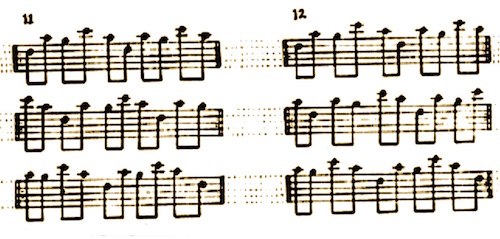
JOHN INGLE, alto saxophone (live with tape loops)
more info
Probably the least known of Steve Reich's "phase music" compositions, Reed Phase, written for the saxophonist Jon Gibson, is the first work in which Reich attempted to apply the discoveries of phasing made with the tape works It's Gonna Rain (1965) and Come Out (1966) to live performance. It represents a transitional stage in that it combined, in its original version, live instrumental performance and tape accompaniment. A technical difference between the tape and live mediums is that in the former, phasing was accomplished by slowing down one tape loop against the other, using the technique of flanging, whereas in the instrumental compositions it proved easier for one player to speed up against the other’s fixed tempo. From the listener’s point of view, however, the difference in effect is indistinguishable.
Reed Phase begins a sequence, followed directly by Piano Phase and Violin Phase (both 1967), in which the composer explores phasing technique for a single performer with tape and, in the case of Piano Phase, just two players. Reich came to regard Reed Phase as a failure. Already with the publication of his collected Writings about Music in 1974, he excluded it from the compositions he regarded as "worth keeping", and never mentions the work in that book, even in passing.
STEVE REICH lived in the San Francisco Bay Area in the early 1960s. During this time he studied with Darius Milhaud and Luciano Berio at Mills College, drove a cab, wrote music for a Mime Troupe, hung out at the San Francisco Tape Music Center, started an improvised music group, and became increasingly interested in electronic music -- especially Terry Riley's work with tape loops. He began experimenting with single musical fragments played back on multiple tape loops of slightly different speeds. This creates a "phasing" effect that gradually transitions from echo to rhythmic hocketing and back. Reich created a handful of compositions based on this technique, works like It's Gonna Rain (1965) and Violin Phase (1967) are established classics of early minimalism.
EARLE BROWN - December 1952 (1952)
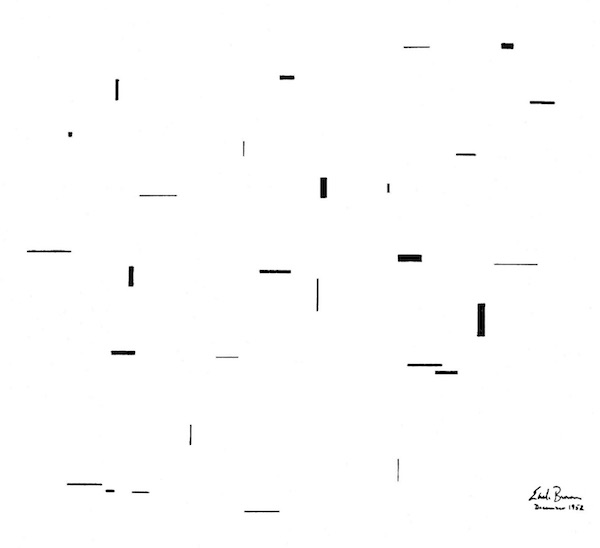
DIANE GRUBBE, flute . KYLE BRUCKMANN, oboe . MATT INGALLS, clarinets
JOHN INGLE, alto saxophone . TOM DAMBLY, trumpet . BRENDAN LAI-TONG, trombone
GIACOMO FIORE, guitar . BENJAMIN KREITH, violin
DEREK KATZ, viola . MONICA SCOTT, cello
more info
My first impulse was to work in scoring and performance-process as such, both of which are represented in the score. I was first moved to think about such things by observing mobiles of Alexander Calder and the very spontaneous painting techniques of Jackson Pollock. Around 1948 or ’49 and I had very much the impulse to do something in “our kind of music,” which would have to do with this highly spontaneous performing attitude—-improvisational attitude, that is—-from a score which would have many possibilities of interpretation. Under the influence of Calder, I considered this kind of thing to be a 'mobility,' which is to say a score that was mobile—-a score that had more than one potential of form and performance realization.....it was a considerable leap or difficulty to conceive of a score that would in itself be something and in itself imply many more things. -- from Earle Brown's essay, On December 1952
EARLE BROWN (1928-2002) was a major force in contemporary music and a leading composer of the American avant-garde. He was associated with the experimental composers John Cage, Morton Feldman, and Christian Wolff who, with Brown, came to be known as the New York School. He was born in 1926 in Lunenburg, Massachusetts and, in spirit, remained a New Englander throughout his life. Like other artists from that region – Ives, Ruggles, Dickinson – he spoke with his own voice and found his own path. To America, these artists were iconoclasts, but to Europe they embodied America – and Brown was no exception: his music has been most frequently performed, studied, lauded, and revered by Europeans. Brown’s interest in a broad range of aesthetic expressions, ranging from the writings of James Joyce and the poetry of Gertrude Stein, Kenneth Patchen, and others to the work of the Abstract Expressionist painters – and particularly Jackson Pollock and Alexander Calder – informed his own work. He said, as recently as in 2000, that “the earliest and still predominant influences on my conceptual attitude toward art were the works of Alexander Calder and Jackson Pollock...the integral but unpredictable ‘floating’ variations of a mobile, and the contextual ‘rightness’ of the results of Pollock’s directness and spontaneity in relation to the materials and his particular image of the work…as a total space (of time).”
Earle Brown’s influence on the avant-garde community has been philosophical as well as tangible and practical. His conducting techniques and experiments with “time notation,” improvisation, and open-form compositional structure have become part of contemporary compositional usage. Among Brown’s most frequently performed and reinterpreted works is December 1952, the score of which is a stark, abstract series of floating rectangles – a musical equivalent to a Calder mobile. His early influential orchestral scores include Available Forms 1 and Available Forms 2, and his musical friendships were legendary, from Bruno Maderna who conducted first performances of many of Brown’s works to jazz musicians such as Zoot Sims and Gerry Mulligan.
SALVATORE SCIARRINO - Esplorazione del bianco II (1986)
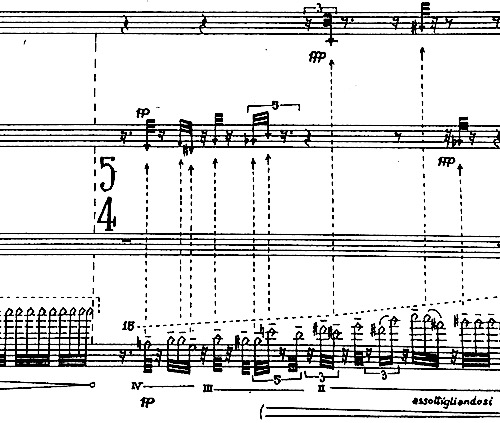
DIANE GRUBBE, flute . MATT INGALLS, bass clarinet
GIACOMO FIORE, guitar . BENJAMIN KREITH, violin
more info
Esplorazione del bianco II (Exploration of white II)
Signs, primary movements of a hand on paper. The formulation of a space is a simple gesture, but everything in our inner being travels to and from the unknown. White contains secrets that at first glance it does not reveal. Perhaps it would be possible to achieve a level of sensitivity where every perception would wound. Within it, opposites are reconciled, like our meditations on life and death. Refining, the surrounding sound comes to the surface, and within us is silence. Innumerable therefore are the shades of white, as infinite as degrees of shadow. Like the memory of an original bolt of lightning, the difference between light and darkness does not exist anymore: indeed, in the wave of light there is a trail of darkness. The exploration of white represents immersion in blindness, a blindness so subtle as to dazzle.
SALVATORE SCIARRINO (Palermo, 1947) started composing when he was 12 and held his first public concert in 1962. But it is only after 1966 that he believes his personal style began to reveal itself. After classical studies and a few years of university in Palermo, he moved to Rome in 1969 and in 1977 to Milan. Since 1983, he has lived in Città di Castello, in Umbria. He has composed for the most important orchestras, opera houses and festivals throughout Europe, in Tokyo and New York. Sciarrino’s discography counts over 100 CDs. In addition to writing most of his theatre opera’s librettos, Sciarrino has written a wide variety of articles, essays and texts; particularly important is his interdisciplinary book about musical form Le figure della musica, da Beethoven a oggi, (Ricordi, 1998). Sciarrino taught at the Music Academies of Milan (1974–83), Perugia (1983–87) and Florence (1987– 96). From 1978 to 1980 he was Artistic Director of Teatro Comunale di Bologna, Academy of Santa Cecilia (Roma), Academic of Fine Arts of Bavaria and Academic of the Arts (Berlin). Sciarrino's awards include Prince Pierre de Monaco (2003) and the prestigious Feltrinelli International Award (Premio Internazionale Feltrinelli) (2003); he was also the first prizewinner of the Salzburg Music Prize (2006). In 2006 his opera Da gelo a gelo, coproduced by Schwetzinger Festspiele, Opéra National de Paris and Grand Théâtre de Genève, was performed to great acclaim. In 2008 La Scala Philharmonic Orchestra performed his 4 Adagi and 12 Madrigali were premiered in the summer of the same year in a portrait series dedicated to him by the Salzburg Festival.
GREG SAUNIER - Secret Mobilization (2010/2016)
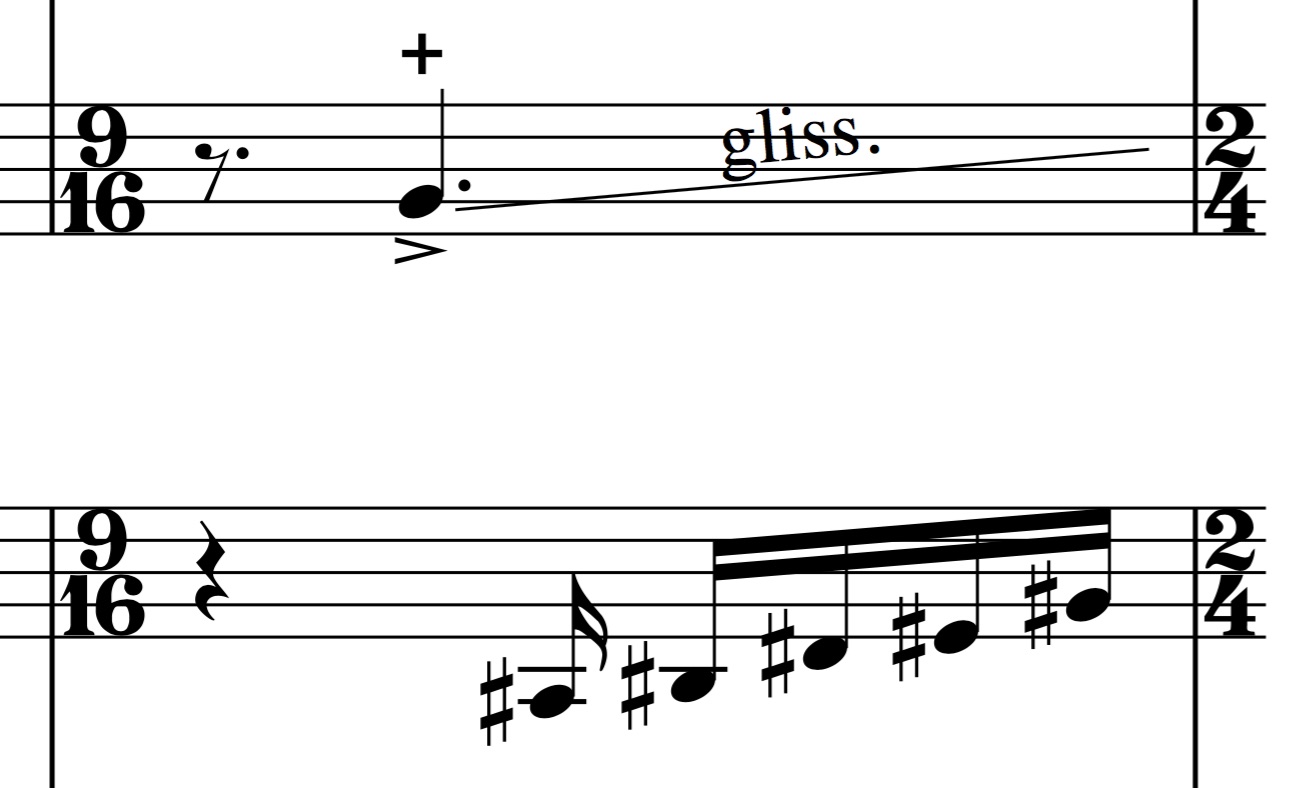
KYLE BRUCKMANN, english horn . JOHN INGLE, alto saxophone
BENJAMIN KREITH, violin . DEREK KATZ, viola . MONICA SCOTT, cello
more info
Secret Mobilization was commissioned and performed by sfSound in 2008, and revised in 2016 for this performance.
GREG SAUNIER is the drummer of Deerhoof.
PHILL NIBLOCK - Disseminate (1998)
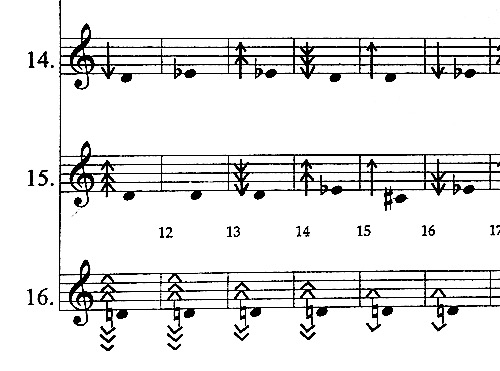
KYLE BRUCKMANN, oboe . MATT INGALLS, clarinet
JOHN INGLE, alto saxophone . MONICA SCOTT, cello
more info
Disseminate was commissioned in 1998 by Petr Kotik for The Orchestra of the S.E.M. Ensemble, which performed it first on June 14, 1998 at the Willow Place Auditorium in Brooklyn. As in most of Niblock’s music, he creates sound differences by combining many simultaneous microtonal pitches/tones (by means of multitrack mixing) to make clouds of sum and difference tones. The score for Disseminate specifies 16 parts which can be pre-recorded or live. For tonight’s concert, we present the piece partially “on tape” with four “live” musicians.
PHILL NIBLOCK is a New York-based minimalist composer, multi-media musician, and director of Experimental Intermedia Foundation. Since the mid-1960’s he has performed at venues around the world, from the Museum of Modern Art to Akademie der Kunste, Berlin. His densely layered drones have inspired a younger generation, including Glenn Branca and Sonic Youth’s Thurston Moore and Lee Renaldo. Niblock says, “What I am doing with my music is to produce something without rhythm or melody, by using many microtones that cause movements very, very slowly.” His landmark debut album, Nothin To Look At Just A Record, was reissued on Superior Viaduct in 2013.
SFSOUNDGROUP - Improvisation (2016)
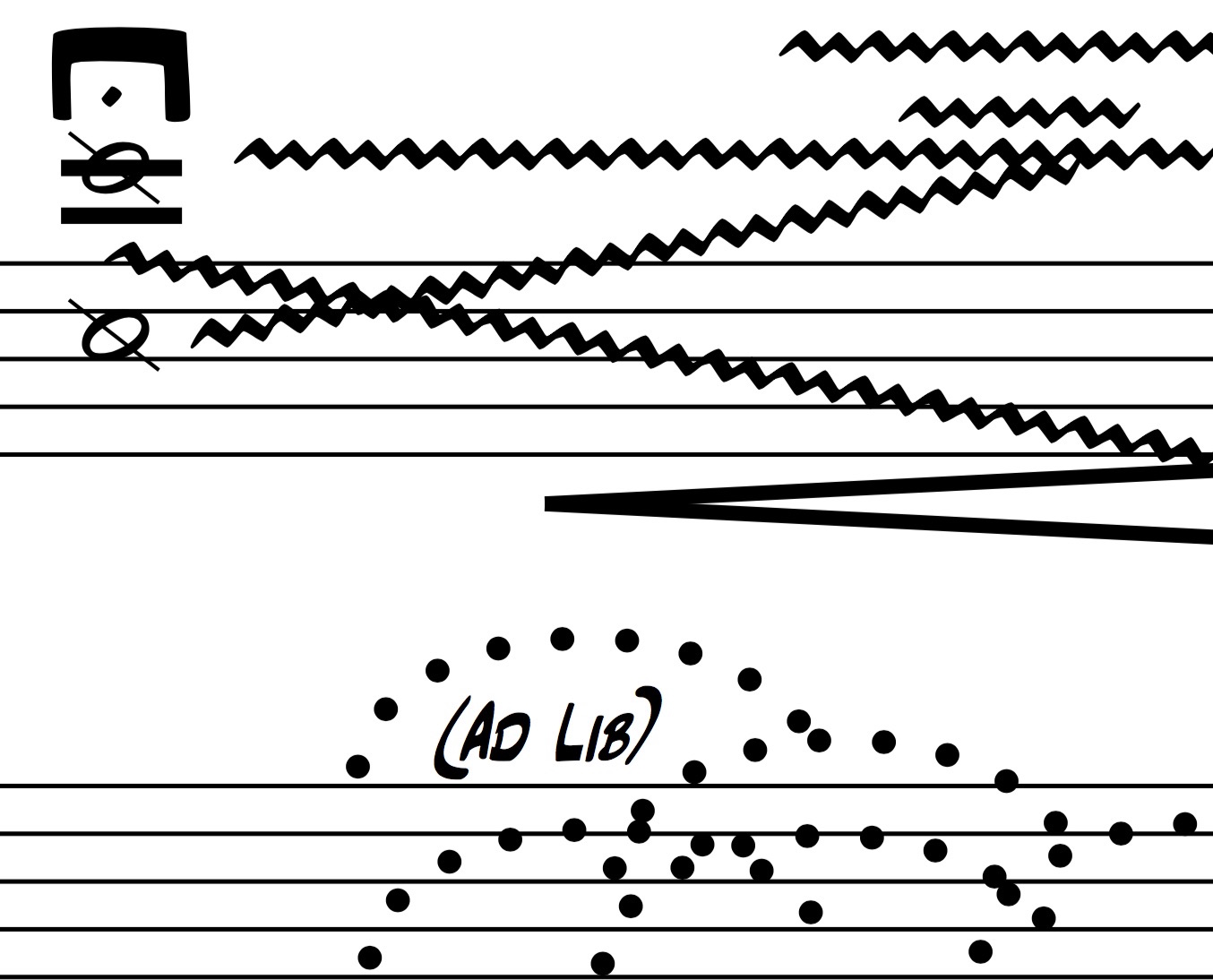
KYLE BRUCKMANN, oboe . MATT INGALLS, clarinets . JOHN INGLE, alto saxophone
TOM DAMBLY, trumpet . BRENDAN LAI-TONG, trombone
BENJAMIN KREITH, violin . MONICA SCOTT, cello
more info
Over the past decade, sfSound has emerged as one of the most fiercely innovative contemporary music organizations in the San Francisco Bay Area. Their performing ensemble, SFSOUNDGROUP, creates their our own collaborative works in the context of the avant-garde, from the ivory tower to the underground. Their programs feature original compositions, improvisations, new commissions, and standard New Music repertoire with an international scope and a distinctly West Coast spin -- honoring, and striving to continue, the Bay Area's critical historical role in the development of the American Experimental tradition. Since 2003, their home concert series (sfSoundSeries) has presented a mix of solo, chamber, and large ensemble works, including conceptual and theatrical works and live electronic music, often emphasizing the continuum between notated composition and free improvisation. In addition, they present an annual 3-day festival of tape music (The San Francisco Tape Music Festival), host a 24/7 Internet radio station (sfSoundRadio), and frequently collaborate with other musicians and institutions in various projects.
DIANE GRUBBE, flutes
KYLE BRUCKMANN, oboe and english horn
MATT INGALLS, clarinets
JOHN INGLE, alto saxophone
TOM DAMBLY, trumpet
BRENDAN LAI-TONG, trombone
GIACOMO FIORE, guitar
BENJAMIN KREITH, violin
DEREK KATZ, viola
MONICA SCOTT, cello
SAM NICHOLS, electronics
SUNDAY DETAILS
< back